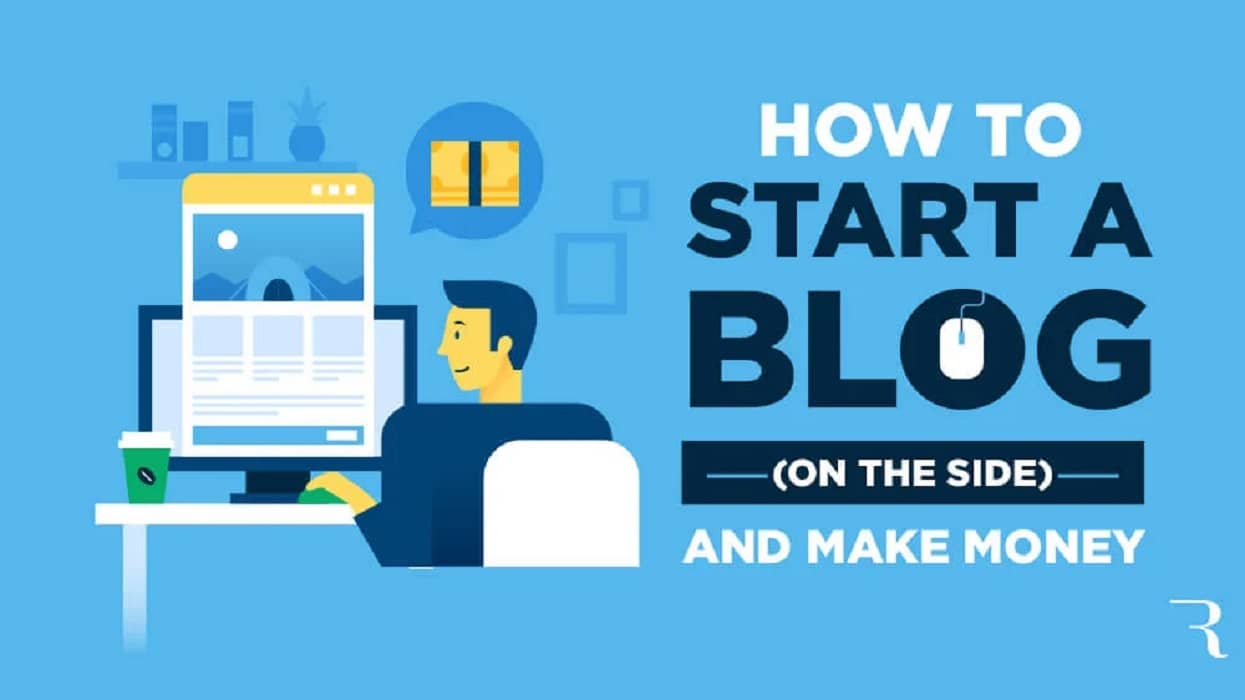How to start a blog and make money for beginners.
- Choose a platform: There are several popular blogging platforms to choose from, such as WordPress, Blogger, and Squarespace. Each has its own pros and cons, so research and choose the one that best fits your needs.
- Choose a domain: Once you’ve chosen a platform, you’ll need to choose a domain name for your blog. This will be the URL (website address) for your blog.
- Choose a hosting: A hosting service is where your blog will live on the internet. Some popular hosting options include Bluehost and HostGator.
- Design your blog: Customize the design and layout of your blog to make it your own. Most platforms offer a variety of templates and themes to choose from.
- Start publishing content: Once your blog is set up, start publishing content on a regular basis. This could be anything from articles, photos, videos, or audio recordings.
- Promote your blog: Share your blog on social media and other online platforms to attract readers and followers. And keep in mind SEO (Search Engine Optimization) to be easily found on search engines.
1.Some of the most popular blogging platforms include:
- WordPress: It’s one of the most popular and powerful blogging platforms. It’s free to use and has a wide range of customization options. It also offers a wide range of plugins and themes to enhance the functionality and design of your blog.
- Blogger: This platform is owned by Google, it’s free and simple to use. It’s a good option for beginners as it has a user-friendly interface and doesn’t require any technical knowledge.
- Squarespace: It’s a paid platform that offers a range of templates and customization options. It’s a good option for those who want a professional-looking blog without having to design it from scratch.
- Medium: Medium is a social platform for writing and sharing stories. It offers an easy-to-use interface and a built-in audience, making it a great option for bloggers who want to reach a wide readership.
- Wix: It’s a website building platform which also offers a blog feature. It’s also easy to use and offers a range of customization options.
- Ghost: It’s an open-source platform that’s focused on delivering a fast, minimalistic, and efficient blogging experience. It’s a good option for developers and those who want more control over the design and functionality of their blog.
Ultimately, the best platform for you will depend on your specific needs and goals. It’s a good idea to try out a few different options before settling on one.
2. Some of the most Choose a domain:
Choosing a domain name is an important step in starting a blog. A domain name is the website address people will use to find your blog, such as www.yourblogname.com. Here are a few tips for choosing a domain name:
- Keep it simple and memorable: Avoid using numbers or hyphens, and try to keep the name as short and easy to remember as possible.
- Make it relevant to your blog: Your domain name should reflect the topic or niche of your blog.
- Use keywords: If possible, include keywords that relate to your blog’s topic in your domain name. This can help with search engine optimization (SEO).
- Check availability: Before you register your domain name, check to make sure it’s available. You can do this by using a domain name registrar or a website that allows you to check domain name availability.
- Consider different TLDs: TLDs are the extensions at the end of a domain name, such as .com, .net, .org, .info, .biz, etc. The most popular TLD is .com, but you can also consider using other TLDs that are relevant to your blog.
- Buy from a reputable registrar: Once you’ve chosen a domain name, you’ll need to register it. There are many domain registrars to choose from, but make sure you choose a reputable one that offers good customer service and protection against domain hijacking.
3. Some of the best a hosting
There are many great web hosting options available, some of the top choices include:
- Bluehost – Known for its excellent customer support and user-friendly interface.
- HostGator – Offers a wide range of plans for businesses of all sizes.
- SiteGround – Known for its reliable uptime and fast loading speeds.
- InMotion Hosting – Offers a 90-day money-back guarantee and excellent customer support.
- A2 Hosting – Known for its fast loading speeds and a wide range of plans for businesses of all sizes.
It’s worth noting that the best hosting for you will depend on your specific needs and budget. It’s always a good idea to do some research and compare the features and pricing of different hosting providers before making a decision.
4. What is the best Medium for blog traffic
There are many different mediums that can be used to drive traffic to a blog. Some of the most popular include:
- Search Engine Optimization (SEO) – By optimizing your blog for search engines, you can increase the visibility of your blog and attract more organic traffic.
- Social Media – Platforms like Facebook, Twitter, and Instagram can be used to promote your blog and drive traffic to it.
- Email Marketing – By sending regular newsletters or email updates to your subscribers, you can keep them engaged and drive traffic to your blog.
- Guest Blogging – Writing guest posts on other blogs in your niche can help you attract new readers to your blog.
- Influencer Marketing – Partnering with influencers in your niche can help you reach a larger audience and drive more traffic to your blog.
- Paid Advertising – Running targeted ads on platforms like Google AdWords or Facebook Ads can help you drive targeted traffic to your blog.
Ultimately, the best medium for driving traffic to your blog will depend on your specific goals and audience. It’s a good idea to experiment with different tactics and see which ones work best for you.
5.Design your blog
- A design template or theme that gives your blog a professional and polished look. There are many free and paid options available.
- A content strategy, which includes a plan for creating and promoting your content. This could include topics you want to write about, how often you will post, and how you will promote your blog.
- Integration with social media platforms, which will allow you to share your posts and interact with readers.
- A contact form, which enables visitors to get in touch with you.
- Analytics and tracking tools, which will allow you to see how many people are visiting your blog, where they’re coming from, and what they’re interested in.
- A newsletter, which will allow you to keep in touch with readers and promote your blog.
- A commenting system, which enables visitors to leave comments on your posts and engage in discussion with you and other readers.
- Monetization options such as ads or affiliate links, which will allow you to make money from your blog.
Once you have all these elements in place, you will have a functional blog.
6.Start publishing content:
Some popular options for blogging platforms include WordPress, Blogger, and Squarespace. Once you have set up your website and chosen a platform, you can begin creating and publishing posts. It’s also a good idea to promote your blog on social media and other online platforms to increase visibility and drive traffic to your site.
Promote your blog: Share your blog on social media and other online platforms to attract readers and followers. And keep in mind SEO (Search Engine Optimization) to be easily found on search engines.



